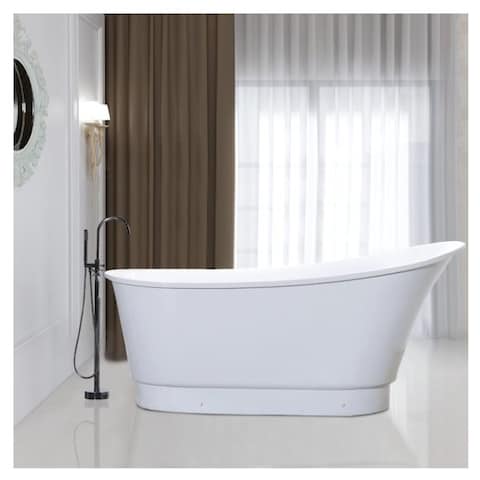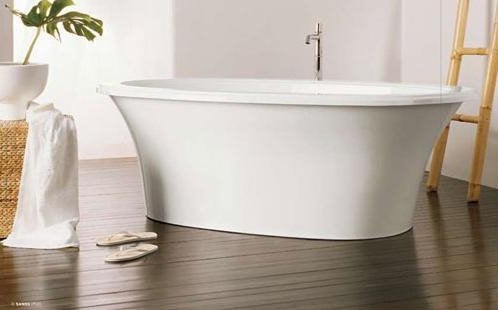The Fundamentals of Plumbing Skills for Bathtub Installation
The Fundamentals of Plumbing Skills for Bathtub Installation
Blog Article
Just how do you feel with regards to Tools You Need to Install a New Bathtub ?

Mounting a bathtub isn't specifically brain surgery, however it does need solid plumbing, woodworking, as well as in some cases, tiling skills. Replacing an old tub with a brand-new one is likewise a reasonably tough project. If the old bathtub is readily obtainable, the job can relocate immediately; if you have to open up a wall to get rid of the old tub and position the new bath tub, the job is much harder. In either instance, the project is within a home handyman's skills, although you will certainly need a helper to leave the old tub and embeded in the brand-new one. Ensure you have actually qualified on your own for the task and also fit attempting it. Instead of working with a contractor to take control of a halfway-completed task, it is far better to consider utilizing one before you begin. Possibilities are you might need an expert plumber to make tube connections.
This short article will assist you set up a new bathtub in your restroom if you have currently purchased a new tub and also do not need to change the arrangement of your previous water supply pipelines.
Your tools and also material checklist should consist of the following:
Removing Old Taps
If you require to replace old faucets with new ones as a part of your setup, then the first thing you must do is detach the water system. After doing so, activate the faucets to drain any kind of water staying in the system. The process of getting rid of the existing taps can be quite troublesome due to the restricted accessibility that is frequently the situation.
Make use of a container wrench (crowsfoot spanner) or a faucet device to undo the nut that connects the supply pipes to the taps. Have a cloth prepared for the staying water that will come from the pipelines. When the supply pipelines have been eliminated, utilize the same tool to loosen up the nut that holds the faucets onto the bath/basin. You will need to stop the single taps from turning throughout this procedure. As soon as the faucets have been eliminated, the holes in the bath/basin will have to be cleaned of any kind of old securing substance.
Prior to moving on to fit the new faucets, compare the pipe links on the old taps to the brand-new faucets. If the old taps are longer than the brand-new taps, after that a shank adapter is needed for the new faucets to fit.
Suitable New Taps
If the tails of the brand-new faucets are plastic, after that you will certainly need a plastic port to stop damage to the string. One end of the port fits on the plastic tail of the tap and the various other end offers a connection to the existent supply pipelines.
If you require to fit a monobloc, after that you will certainly call for lowering couplers, which links the 10mm pipeline of the monobloc to the conventional 15mm supply pipeline.
Next, place the tap in the mounting hole in the bath/basin making sure that the washing machines are in area between the faucet and also the sink. Secure the tap in position with the producer provided backnut. Once the tap is safely in place, the supply pipes can be linked to the tails of the faucets. The faucets can either be attached by utilizing corrugated copper piping or with regular faucet adapters. The previous kind should be linked to the tap ends first, tightening only by hand. The supply pipes can later on be attached to the various other end. Tighten up both ends with a spanner after both ends have been connected.
Setting up the Tub
Utilizing the two wood boards under its feet, position the tub in the required position. The wood boards are handy in equally spreading out the weight of the tub over the area of the boards as opposed to focusing all the weight onto 4 small factors.
The next goal is to make sure that the tub is leveled all round. This can be attained by examining the spirit level and adjusting the feet on the bath tub up until the spirit level reviews level.
To mount faucets, fit the bottom of the outermost flexible faucet connector to the ideal supply pipe by making a compression sign up with; then do the exact same for the other faucet.
Activate the supply of water and also check all joints and new pipework for leaks and also tighten them if needed. Fill up the bath tub as well as additionally inspect the overflow outlet as well as the regular outlet for leaks.
Lastly, deal with the bath paneling as described in the producer's user's manual. Tiling and also securing around the bathtub should wait until the bathtub has been used a minimum of once as this will settle it into its last setting.
Planning for the Setup
First of all, the supporting frame provided with the bathroom must be fitted (if required) according to the manufacturer's guidelines. Next, fit the faucets or mixer to the tub. When suitable the faucet block, it is necessary to make certain that if the tap includes a plastic washer, it is fitted in between the bathroom and the taps. On a plastic bath, it is likewise reasonable to fit a sustaining plate under the faucets device to stop pressure on the bathtub.
Fit the flexible tap adapters to the bottom of both faucets utilizing 2 nuts as well as olives (often supplied with the bathtub). Fit the plug-hole electrical outlet by smearing mastic filler round the sink outlet hole, and afterwards pass the electrical outlet with the hole in the bath. Make use of the nut supplied by the producer to fit the plug-hole. Examine the plug-hole electrical outlet for an inlet on the side for the overflow pipe.
Next off, fit the end of the flexible overflow pipeline to the overflow outlet. After that, screw the pipeline to the overflow face which must be fitted inside the bath. See to it you utilize every one of the supplied washing machines.
Attach the catch to the bottom of the waste outlet on the bathtub by winding the thread of the waste electrical outlet with silicone mastic or PTFE tape, and screw on the trap to the electrical outlet. Link the bottom of the overflow tube in a similar manner.The bathroom must now prepare to be fitted in its last placement.
Tiling Around the Bathtub
In the location where the bath satisfies the floor tile, it is necessary to seal the accompanies a silicone rubber caulking. This is important as the fitting can relocate sufficient to fracture a rigid seal, creating the water to permeate the wall surface in between the bathroom and the tiling, resulting in issues with wetness and also feasible leakages to the ceiling listed below.
You can pick from a selection of coloured sealers to assimilate your components and also installations. They are offered in tubes as well as cartridges, and can sealing gaps up to a width of 3mm (1/8 inch). If you have a bigger void to fill up, you can fill it with twists of soaked paper or soft rope. Keep in mind to always fill up the bathtub with water prior to securing, to allow for the activity experienced when the bathtub is in usage. The sealant can crack rather early if you do not consider this movement prior to sealing.
Alternatively, ceramic coving or quadrant ceramic tiles can be used to border the bath or shower tray. Plastic strips of coving, which are easy to use as well as cut to dimension, are also quickly available on the marketplace. It is advisable to fit the ceramic tiles making use of water-resistant or water-proof adhesive as well as cement.
Bathtub Installation
How Important Is A Bathtub To Your Home?
High-quality baths, showers, and other bathroom updates are necessary when considering a smart investment in your home. It’s a room that you go to every day and one that is constantly being used by guests.The bathroom is one of the top trafficked rooms in a home and also one of the most valuable in terms of home resale.
Install Piping Before Tub
You will be using your existing drain and waste vent system, but pipes required include the hot and cold water supply lines and a pipe leading to a shower head. A mixing valve and shower head are also needed. Air chambers may be required.
Position the Tub
Lower the tub into place so that the continuous flange fits against the wall studs and rests on 1’x4' or 2’x4' supports. Anchor the tub to the enclosure with nails or screws inserted through the flanges into the studs.
NOTE: Remember, bathtubs and shower stalls may require support framing. A bathtub filled with water is extremely heavy, so check building codes and framing support before installing the tub.
Assemble Drain Connections
Assemble the bathtub drain connections by connecting the tub overflow with the tub drain above the trap, not beyond it. The trap will have a compression fitting that screws over the arm of the overflow assembly.
Place a Pipe For the Shower Head
First, locate a brass female threaded winged fitting and attach it to a framing support via a screw or a nail. Then run a pipe up the wall for the shower head. Sweat or solder the other side of the brass fitting to the top of the pipe.
Attaching Hot and Cold Water Lines
Attach your water lines for both hot and cold by sweating these directly into the hot and cold ports of the mixing valve. The mixing valve will be how water enters the tub’s system, not by the pipes themselves.
Install the Spout
Extend a piece of 1/2 inch pipe, or whichever length is specified in the manufacturer’s instructions, for the tub spout. Sweat on a male threaded fitting at the end of the pipe or use a brass nipple of the proper length and a 1/2 inch cap.
NOTE: At this point you should have your rough-in plumbing work inspected before proceeding further.
Check For Leaks
Restore the water pressure and check the drain connection and the supply pipes for any sign of leaking.
estore the Bathroom Wall
Replace the wall with moisture-resistant drywall as a base for your wall covering. Seal the joints between the wall and your new tub with silicone caulk as protection against water seepage.
https://www.berkeys.com/2016/12/02/bathtub-installation-dallas/

I'm just very excited about Tools You Need to Install a New Bathtub and I am praying you liked the new piece. You should take a moment to distribute this blog if you enjoyed it. Thank you for your time invested reading it.
Call us now! Report this page